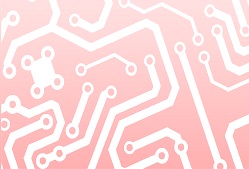Resistance of Radiation Tolerant TMR Shift Registers to Optical Fault Injections
Keywords:
Fault Injection attack, laser, reliability, security, triple modular redundancy, standard library, rad-hard flip-flopsAbstract
Protection of information is essential for IoT devices. They are often subject to lab analysis with the objective to reveal secret hidden information. One of the ways to reveal the cryptographic key is to perform optical Fault Injection attacks. In this work, we investigated the IHP radiation tolerant shift registers built of Triple Modular Redundant flip-flops. In our experiments, we were able to inject different transient faults into TMR registers using a single laser beam.
References
P. Kocher, J. Jaffe, and B. Jun, “Differential Power Analysis”, in Advances in Cryptology — CRYPTO’ 99, vol. 1666, Berlin, Heidelberg: Springer Berlin Heidelberg, 1999, pp. 388–397.
K. Itoh, T. Izu, and M. Takenaka, “Address-Bit Differential Power Analysis of Cryptographic Schemes OK-ECDH and OK-ECDSA”, in Cryptographic Hardware and Embedded Systems, 2002, pp. 129–143.
I. Kabin, Z. Dyka, D. Klann, and P. Langendoerfer, “Methods increasing inherent resistance of ECC designs against horizontal attacks”, Integration, vol. 73, Jul. 2020, pp. 50–67.
I. Kabin, Z. Dyka, and P. Langendoerfer, “Atomicity and Regularity Principles Do Not Ensure Full Resistance of ECC Designs against Single-Trace Attacks”, Sensors, vol. 22, no. 8, Art. no. 8, Jan. 2022.
S. Skorobogatov and R. Anderson, “Optical Fault Induction Attacks”, Workshop on Cryptographic Hardware and Embedded Systems (CHES), USA, San Francisco, Aug, 13–15, 2002, pp. 2–12.
D. Petryk et al., “Optical Fault Injections: a Setup Comparison”, Proc. PhD Forum of the 8th BELAS Summer School, Estonia, Tallinn, June 20–22, 2018, pp. 1–5.
D. Petryk, Z. Dyka and P. Langendörfer, “Sensitivity of Standard Library Cells to Optical Fault Injection Attacks in IHP 250 nm Technology”, 2020 9th Mediterranean Conference on Embedded Computing (MECO), Montenegro, Budva, June 8–11, 2020, pp. 1–4.
D. Petryk, Z. Dyka, J. Katzer and P. Langendörfer, “Metal Fillers as Potential Low Cost Countermeasure against Optical Fault Injection Attacks”, 2020 IEEE East-West Design & Test Symposium (EWDTS), Bulgaria, Varna, Sept. 4–7, 2020, pp. 1–6.
R. Sorge et al., “JICG MOS transistors for reduction of radiation effects in CMOS electronics”, 2018 IEEE Topical Workshop on Internet of Space (TWIOS), USA, CA, Anaheim, Jan. 14–17, 2018, pp. 17–19.
D. Petryk et al., “Optical Fault Injection Attacks against Radiation-Hard Shift Registers”, 2021 24th Euromicro Conference on Digital System Design (DSD), Italy, Palermo, Sept. 1–3, 2021, pp. 371–375.
V. Petrovic and M. Krstic, “Design Flow for Radhard TMR Flip-Flops”, 2015 IEEE 18th International Symposium on Design and Diagnostics of Electronic Circuits & Systems (DDECS), 2015, pp. 203–208.
Riscure. Diode Laser Station Datasheet, 2011. https://www.riscure.com/security-tools/inspector-hardware/
Alphanov PDM laser sources. Rise time comparison. URL: https://www.alphanov.com/en/products-services/pdm-laser-sources
Jasper G. J. van Woudenberg et al., “Practical optical fault injection on secure microcontrollers”, 2011 Workshop on Fault Diagnosis and Tolerance in Cryptography, Japan, Nara, Sept. 28, 2011, pp. 91–99.
E. Trichina and R. Korkikyan, “Multi Fault Laser Attacks on Protected CRT-RSA”, 2010 Workshop on Fault Diagnosis and Tolerance in Cryptography (FDTC), USA, CA, Aug. 21, 2010, pp. 75–86.
D. Petryk et al., “Sensitivity of HfO2-based RRAM Cells to Laser Irradiation”, Microprocessors and Microsystems, Volume 87, 2021, 104376, ISSN 0141-9331, pp. 1–20.
S. de Castro et al., “Frontside Versus Backside Laser Injection: A Comparative Study”, ACM Journal on Emerging Technologies in Computing Systems, 2016, 13 (1), pp. 7.
M. Krstic, “Optimizing Design of Fault-Tolerant Computing Systems”, Workshop on Hardware Design and Theory, Austria, Vienna, 2017.
J. Fan et al., “State-of-the-art of secure ECC implementations: a survey on known side-channel attacks and countermeasures”, 2010 IEEE International Symposium on Hardware-Oriented Security and Trust (HOST), USA, CA, Anaheim, 2010, pp. 76-87.
IHP – Leibniz-Institut für innovative Mikroelektronik. URL: https://www.ihp-microelectronics.com/about-us
O. Schrape et al., “Design and Evaluation of Radiation-Hardened Standard Cell Flip-Flops”, in IEEE Transactions on Circuits and Systems I: Regular Papers, vol. 68, no. 11, Nov. 2021, pp. 4796-4809.
D. Lewis et al., “Backside Laser Testing of ICs for SET Sensitivity Evaluation”, IEEE Transactions On Nuclear Science, Vol. 48, No. 6, Dec. 2001, pp. 2193-2201.
D. Petryk, “Investigation of sensitivity of different logic and memory cells to Laser Fault Injections”, Doctoral thesis, BTU Cottbus – Senftenberg, 2024. DOI: 10.26127/BTUOpen-6664
D. Petryk et al., “Laser Fault Injection Attacks against Radiation Tolerant TMR Registers”, 2022 IEEE 23rd Latin American Test Symposium (LATS), Montevideo, Uruguay, 2022, pp. 1-2.
J. Rodriguez, A. Baldomero, V. Montilla and J. Mujal, “LLFI: Lateral Laser Fault Injection Attack”, 2019 Workshop on Fault Diagnosis and Tolerance in Cryptography (FDTC), Atlanta, USA, 2019, pp. 41-47.

Downloads
Published
How to Cite
Issue
Section
License
Copyright (c) 2024 Dmytro Petryk, Peter Langendörfer, Zoya Dika

This work is licensed under a Creative Commons Attribution-NonCommercial 4.0 International License.
License Terms:
Except where otherwise noted, content on this website is lincesed under a Creative Commons Attribution Non-Commercial License (CC BY NC)
![]()
Use, distribution and reproduction in any medium, provided the original work is properly cited and is not used for commercial purposes, is permitted.
Copyright to any article published by WiPiEC retained by the author(s). Authors grant WiPiEC Journal a license to publish the article and identify itself as the original publisher. Authors also grant any third party the right to use the article freely as long as it is not used for commercial purposes and its original authors, citation details, and publisher are identified, in accordance with CC BY NC license. Fore more information on license terms, click here.